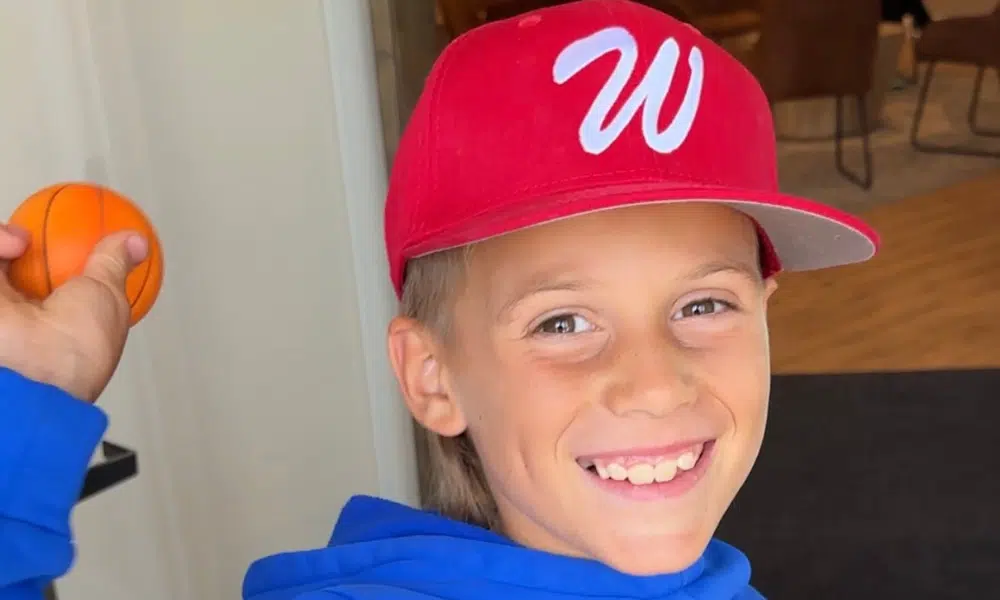For children and teens with Attention Deficit Hyperactivity Disorder (ADHD), everyday life can feel like an uphill battle. The constant struggle to focus, control impulses, and manage emotions can be exhausting for the child and their entire family. Over time, the chronic stress of dealing with ADHD burnout symptoms can lead to a state of physical, mental, and emotional exhaustion known as ADHD burnout.
Child and teen burnout is a common yet often overlooked challenge faced by many children with ADHD and their families. It can manifest as overwhelm, frustration, and hopelessness, making it difficult for children to thrive at home, school, and social situations. Parents may feel helpless as they watch their child struggle, wondering if there’s a way to break the cycle of exhaustion and help their child reach their full potential.
In this article, we’ll dive deep into ADHD burnout, exploring its causes, symptoms, and, most importantly, how a neurologically-focused approach can help children and families overcome this challenge. We’ll also discuss the limitations of conventional care and introduce Neurologically-Focused Chiropractic Care as a drug-free solution for managing symptoms of burnout.
What is ADHD Burnout?
ADHD burnout is a state of chronic stress and exhaustion that results from the constant effort to manage and cope with the symptoms of Attention Deficit Hyperactivity Disorder (ADHD). It is characterized by feelings of overwhelm, frustration, and detachment, as well as a sense of being unable to meet the demands of daily life. While anyone can experience burnout, children with ADHD are particularly susceptible due to the unique challenges they face.
ADHD burnout differs from regular burnout in several ways:
- It is specifically related to the struggles of managing ADHD symptoms, such as inattention, hyperactivity, and impulsivity.
- It often occurs in conjunction with other mental health issues, such as anxiety and depression, which are common comorbidities in children with ADHD.
- It can significantly impact a child’s overall development and well-being, affecting their ability to learn, form relationships, and build self-esteem.
Common characteristics of ADHD burnout include:
Emotional
- Feeling overwhelmed and unable to cope with daily tasks
- Increased frustration and irritability
- Sense of hopelessness and helplessness
- Loss of motivation and interest in activities
Physical
- Chronic fatigue and exhaustion
- Difficulty sleeping or sleeping too much
- Headaches and muscle tension
- Changes in appetite and weight
Cognitive
- Difficulty concentrating and making decisions
- Forgetfulness and memory issues
- Decreased productivity and performance
- Negative self-talk and self-doubt
A recent study found that up to 50% of children with ADHD experience symptoms of burnout, highlighting the widespread nature of this challenge. As parents and caregivers, recognizing the signs of ADHD burnout is the first step in helping children break free from its grip and thrive.
Causes and Risk Factors of ADHD Burnout
A single factor does not cause ADHD burnout but rather a combination of genetic, environmental, and neurological influences that create a “Perfect Storm” of stress and dysfunction. Understanding these underlying causes and risk factors is crucial for developing effective strategies to prevent and manage ADHD burnout.
“The Perfect Storm” concept describes the cumulative impact of various stressors on a child’s developing nervous system, setting the stage for ADHD burnout. These stressors include:
- Prenatal stress and maternal health: Maternal stress during pregnancy can impact fetal brain development, increasing the risk of neurodevelopmental disorders like ADHD.
- Birth interventions and trauma: Complications during labor and delivery, such as prolonged labor, forceps or vacuum extraction, and cesarean sections, can cause physical and neurological stress to the infant, leading to nervous system dysfunction.
- Early childhood stressors and environmental factors: Exposure to toxins or overuse of antibiotics during the early years can alter the development of the nervous system and increase the risk of ADHD burnout. Environmental factors, such as sensory overload, poor sleep, and unhealthy diets, can also contribute.
The Role of Subluxation, Dysautonomia, and Nervous System Dysfunction
Subluxation refers to a state of altered positioning and alignment within the neurospinal system, which can then cause nervous dysfunction and dysregulation. Subluxation can lead to dysautonomia (imbalance in the autonomic nervous system) and overall nervous system dysfunction.
When the nervous system is not functioning optimally, children with ADHD may have difficulty regulating their stress response, emotions, and behaviors, making them more vulnerable to burnout.
In addition to “The Perfect Storm” and neurological factors, several other elements can increase the risk of ADHD burnout:
- Lack of support: Children with ADHD who do not receive adequate support from family, friends, and educators are more likely to experience burnout.
- Overcommitment: Taking on too many responsibilities or activities can lead to overwhelm and burnout, especially when coupled with the challenges of managing ADHD symptoms.
- Poor coping strategies: Relying on unhealthy coping mechanisms, such as avoidance, procrastination, or substance use, can exacerbate stress and contribute to burnout.
By understanding the complex interplay of these causes and risk factors, parents and healthcare providers can work together to develop targeted interventions that address the root causes of ADHD burnout and promote resilience in children with ADHD.
The ADHD Burnout Cycle
ADHD burnout is not a one-time event but rather a recurring cycle that can be difficult to break without proper intervention. The ADHD burnout cycle consists of four main stages: stress, overwhelm, avoidance, and restart.
- Stress: The cycle begins with the accumulation of stress from various sources, such as school demands, family conflicts, or social pressures. For children with ADHD, managing symptoms like inattention, impulsivity, and hyperactivity can add to this stress load, making it more difficult to cope with everyday challenges.
- Overwhelm: As stress builds up, children with ADHD may begin to feel overwhelmed and unable to meet the demands placed upon them. They may struggle to complete tasks, make decisions, or regulate their emotions, leading to feelings of frustration, anxiety, and self-doubt.
- Avoidance: When faced with overwhelm, children with ADHD may resort to avoidance behaviors as a coping mechanism. This can manifest as procrastination, disengagement from activities, or even complete withdrawal from responsibilities. While avoidance may provide temporary relief from stress, it ultimately contributes to the accumulation of unfinished tasks and unresolved issues, further fueling the cycle of burnout.
- Restart: After a period of avoidance, children with ADHD may experience a burst of motivation or energy, prompting them to restart their efforts. However, without addressing the underlying causes of burnout, this renewed effort can quickly lead back to stress and overwhelm, perpetuating the cycle.
The ADHD burnout cycle can become self-reinforcing, with each iteration leading to greater levels of exhaustion and making it increasingly difficult for children to recover without intervention. Over time, chronic exposure to this cycle can have significant impacts on a child’s mental health, self-esteem, and overall well-being.
Fortunately, by identifying the stages of the cycle and implementing targeted strategies to interrupt the pattern, parents and healthcare providers can help children with ADHD avoid the long-term consequences of chronic burnout.
The PX Docs Approach to ADHD Burnout
Conventional “treatments” for ADHD, such as medication and behavioral therapy, often focus on managing symptoms rather than addressing the underlying causes of burnout. While these approaches can be helpful for some children, they may not provide the comprehensive support needed to break the cycle of burnout and promote long-term well-being.
At PX Docs, we take a different approach. Our Neurologically-Focused Chiropractic Care model is designed to identify and address the root causes of ADHD burnout by promoting balance and optimal function in the nervous system.
To assess each child’s unique needs, we use INSiGHT Scans, a cutting-edge technology that measures nervous system function and helps us identify areas of dysfunction. This information allows us to develop customized care plans and track progress over time, ensuring that each child receives the targeted support they need to overcome ADHD burnout.
How to Manage and Prevent ADHD Burnout Symptoms
In addition to Neurologically-Focused Chiropractic Care, there are several strategies that parents and children can implement to manage and prevent ADHD burnout:
- Lifestyle changes: Encouraging healthy habits such as regular exercise, balanced nutrition, and sufficient sleep can help children with ADHD better manage stress and maintain emotional well-being.
- Fostering a supportive environment: Creating a supportive and understanding environment at home and school can help children with ADHD feel more secure and less overwhelmed. This may involve educating family members and teachers about ADHD and burnout, and advocating for necessary accommodations.
- Teaching self-awareness and self-advocacy: Helping children with ADHD recognize their own signs of burnout and communicate their needs can empower them to take an active role in managing their well-being.
- Incorporating mindfulness and relaxation techniques: Practicing mindfulness, deep breathing, and other relaxation techniques can help children with ADHD better regulate their emotions and reduce stress.
- Collaborating with healthcare providers and educators: Working closely with a child’s healthcare team and school staff can ensure that everyone is on the same page and provide a consistent support system for managing and preventing burnout.
Breaking Free from ADHD Burnout: A Path to Thriving
ADHD burnout is a complex and challenging condition that can have significant impacts on a child’s mental health and overall well-being. By understanding the underlying causes and risk factors, recognizing ADHD burnout symptoms, and adopting a neurologically-focused approach to care, parents and healthcare providers can help children with ADHD break free from the cycle of burnout and thrive.
At PX Docs, we believe that every child deserves the opportunity to reach their full potential, free from the burden of chronic stress and exhaustion. Our unique approach, which combines gentle chiropractic care, lifestyle interventions, and collaborative support, has helped countless children and families overcome ADHD burnout and reclaim their joy, energy, and resilience.
If you suspect that your child may be experiencing ADHD burnout, or if you are seeking a more comprehensive, drug-free approach to managing ADHD symptoms, we encourage you to visit the PX Docs directory and find a qualified practitioner near you. Together, we can help your child break free from the cycle of burnout and unlock their true potential.





